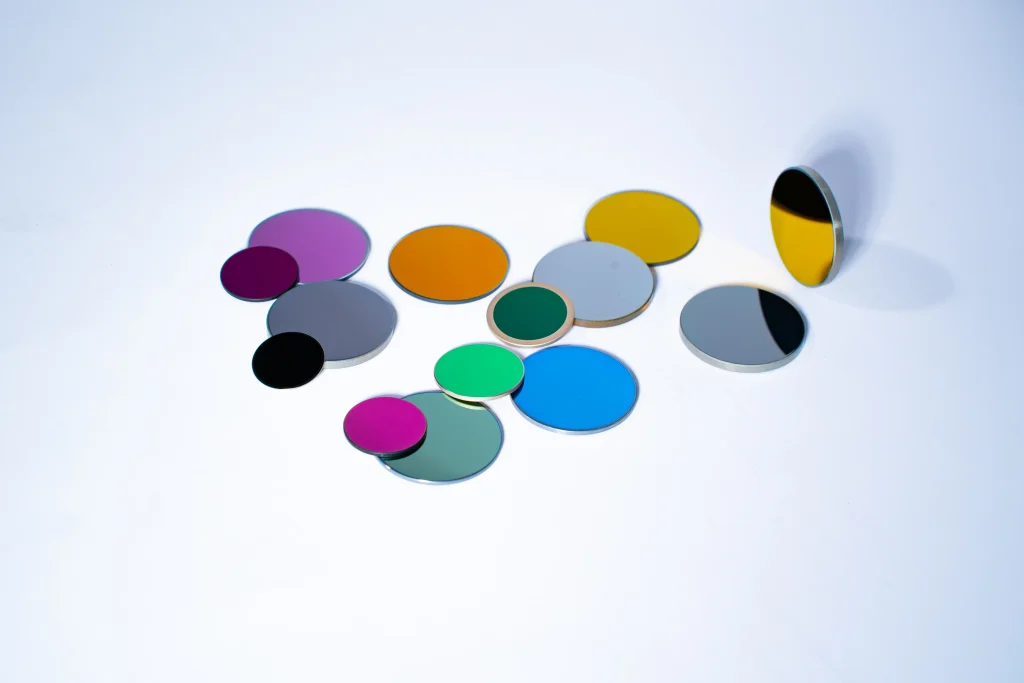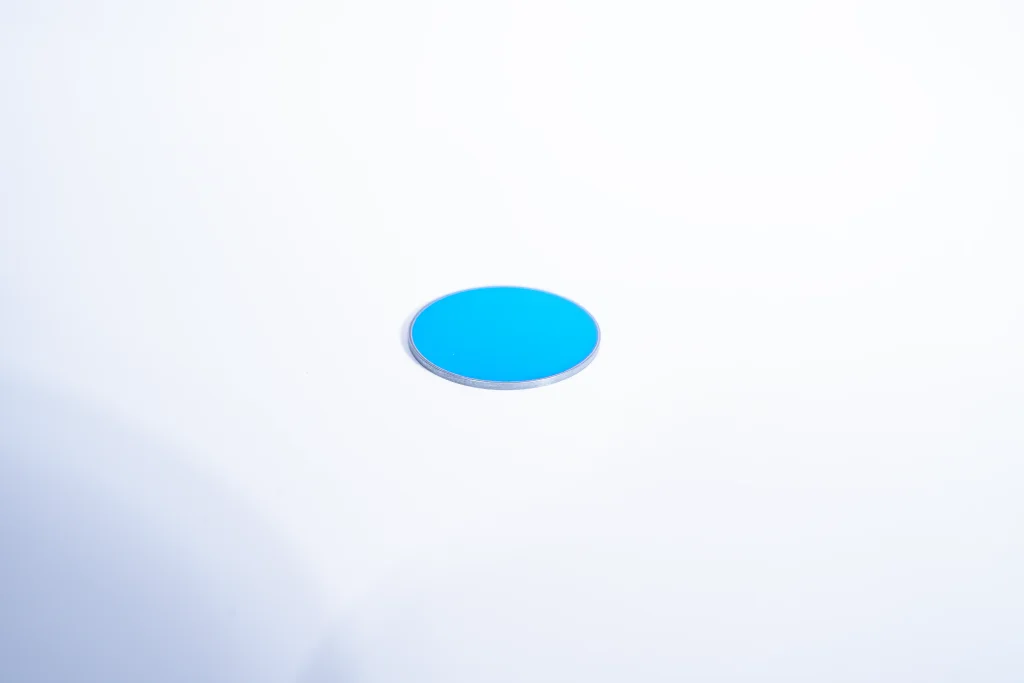Infrared filters are super important parts in optical systems. Dirt can mess them up big time. This guide shows you the best ways to clean them and keep them safe. You’ll learn how to make your filters last longer and work great for things like gas testing, thermal cameras, and defense gear.

Why Is Proper Infrared Filter Maintenance Critical for Optical System Performance?
What Functional Role Do Infrared Filters Play in Precision Optical Applications?
Infrared filters are not just regular parts. They’re super cool pieces that let only certain infrared light through or block others. This helps with accurate signal catching, temperature checking, or picture making. Infrared filters are like tiny lenses with big smarts. They’re used in tons of places, like airplanes, defense tools, cars, and medical gear, where being exact is a must.
Bodian’s filters are key in gas analyzers, spy cameras, infrared sensors, star-gazing tools, smart toilets, remote controls, thermometers, detectors, and night vision gear. How well they work affects the whole system. Even a little dirt can make things go wrong.
How Does Contamination Affect Filter Efficiency and Lifespan?
Dirt like dust, oil, or fingerprints can hurt how well your infrared filters work. These things scatter light, lower how much light gets through, and add weird signals that mess up results. Over time, dirt can even react with filter coatings, especially in wet or hot places, causing damage you can’t fix.
Infrared filters use smart infrared ideas and careful designs. Dirt throws off all that hard work, making your system less clear.
What Types of Infrared Filters Are Offered by This Manufacturer?
If you need awesome filters for tough jobs like gas sensing or thermal cameras, check out Bodian’s stuff. They make cool filters like infrared narrowband filters, infrared broadband filters, infrared long pass filters, infrared short pass filters, and infrared anti reflection filters. These are made with high-tech tools to stay top-notch, even when making lots of them.
Bodian’s filters are used in health tools, eco-monitoring gear, factory lines, airplane systems, and defense setups. They’re built to handle dirt and keep working great.

What Are the Most Common Contaminants Found on Infrared Filters?
Which Substances Typically Accumulate on Infrared Filter Surfaces During Use?
Dirt on infrared filters usually comes in two types: bits like dust or metal flakes, and smudges like fingerprints or oily stuff. Bits come from the air or rubbing during handling. Smudges come from touching the filter or nearby sticky things like glue or oil.
Even tiny bits of dirt can mess with infrared systems because the light waves are so small.
How Do Surface Pollutants Interfere With Light Transmission Efficiency?
Bits scatter light all over, and smudges soak up certain light waves. This makes signals weaker and messes up measurements over time. In jobs like gas testing or thermal cameras, where exact light is super important, dirt can cause wrong readings or missed signals.
Many filters have lots of layers, so dirt can also mess with how light bounces inside the filter.
Why Can Improper Cleaning Be More Harmful Than Helpful?
Using rough stuff or wrong cleaners can wreck the filter’s special coatings. Pushing too hard can make tiny scratches that scatter light forever. If you use tap water or bad cleaners, you might add stuff that eats away at the filter, ruining its clarity and strength.
Which Cleaning Techniques Are Recommended for Maintaining Infrared Filters?
When Should You Use Dry Cleaning Methods Like Air Blowers and Anti-Static Brushes?
Dry cleaning is great for loose dirt, like dust, without adding water that could hurt coatings. Use a clean air blower to push dust off. Then, use an anti-static brush made for fancy optics. Try to work in a super clean room to keep new dirt away.
This is the first thing to try before using wet cleaning.
How Should You Approach Wet Cleaning When Dealing With Persistent Residues?
For tough smudges that won’t come off dry:
Pick a cleaner that’s safe for your filter’s coating.
Use lint-free wipes folded into squares.
Wipe gently in one direction, not in circles.
Let the filter dry fully before putting it back.
Isopropyl alcohol (IPA) at 99% is usually okay for most coatings, but check Bodian’s guide first.
What Are Best Practices for Handling and Cleaning These Specific Filters?
How Can You Prevent Surface Damage During Routine Handling?
Always wear clean nitrile gloves to avoid oil from your hands. Hold filters by the edges with soft tweezers if needed. Never set them face-down, even on soft cloth, because tiny bits can stick and scratch.
Move them in anti-static cases with foam padding made for optics.
Are These Filter Coatings Compatible With Common Solvents Used in Optics Labs?
Bodian’s multilayer designs are tough for lab use, but always check their safety sheets before using cleaners. Infrared filters use smart infrared ideas, so stick to Bodian’s cleaning rules to keep them safe.
Which Tools And Materials Should Be Used For Precision Cleaning Tasks?
What Types of Wipes and Swabs Are Safe for High-End Optical Surfaces?
Use lint-free microfiber wipes for super clean rooms and foam swabs that don’t shed bits. Don’t use paper-based stuff—it leaves fibers that trap water and make new dirt.
Throw away wipes and swabs after one use to avoid spreading dirt.
Which Solvents Won’t Damage Sensitive Coating Layers on Infrared Filters?
Pure ethanol or 99% IPA are great because they dry fast and leave no mess. Don’t use acetone unless Bodian says it’s okay—it can wreck some filter coatings. Infrared filters have many layers, so they’re extra sensitive to strong cleaners.
How Should You Store Cleaned Filters To Prevent Recurring Contamination?
After cleaning:
Put each filter in its own anti-static bag.
Add desiccant packs if it’s humid.
Store them upright in padded boxes, away from sunlight.
Don’t stack filters, even with paper between them. Shaking during travel can chip edges or rub coatings.
How Often Should You Perform Maintenance Based On Environmental Conditions?
What Determines Optimal Cleaning Frequency For Your Application Environment?
Filters in dusty factories need checking more often than ones in clean labs. Try:
Monthly checks for clean rooms.
Weekly looks near machines.
Daily peeks for outdoor spy gear.
Check based on how much dirt builds up, not just a calendar.
What Steps Should Be Included In Pre-Cleaning And Post-Cleaning Inspections?
Before cleaning:
Look at the filter under bright light.
Spot what kind of dirt is there (dust or smudges).
After cleaning:
Check again under the same light.
Make sure no streaks are left.
Write down the date, time, and who cleaned it.
Keep a log for quality and to track use in big jobs like aerospace or medicine.
Why Are These Infrared Filters Ideal For Long-Term Reliability And Easy Maintenance?
Which Structural Features Make Them Durable Even Under Harsh Conditions?
Bodian’s filters use tough coatings made with special tech, like ion-assisted deposition. This makes them resist scratches and handle shakes or hot-cold changes, like in car testing.
How Do The Coating Technologies Simplify Regular Cleaning Routines?
The top layer pushes away water and fingerprints, so you don’t need to clean as much. This saves time and keeps filters working great in places like gas detection or defense.
FAQ
Q1: Can I use household alcohol-based cleaners on my IR filter if I don’t have lab-grade IPA?
A: No. Household cleaners have extras like scents that leave gunk. Use 99% pure IPA made for optics only.
Q2: Is it safe to clean both sides of an IR filter?
A: Yes, if both sides have the same coating. If not, clean only the main side unless Bodian’s guide says otherwise.
Q3: What’s the best way to determine if my filter needs replacing instead of just cleaning?
A: If light still doesn’t pass well after cleaning, or if coatings peel under bright light, replace the filter to keep your system working great.

